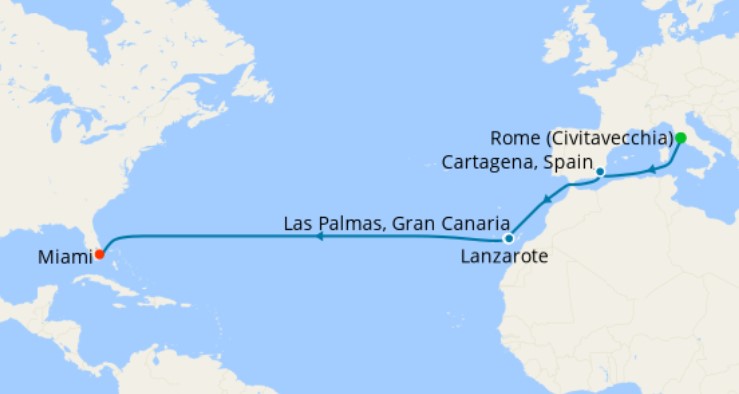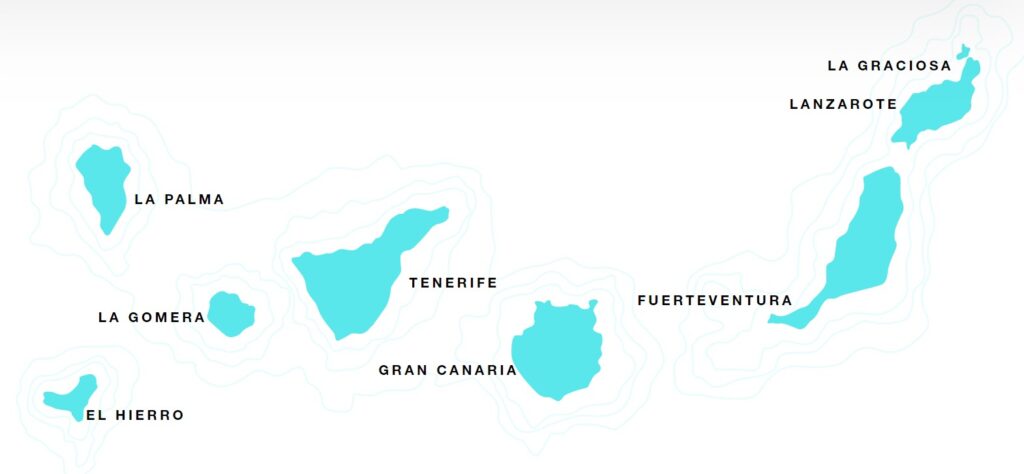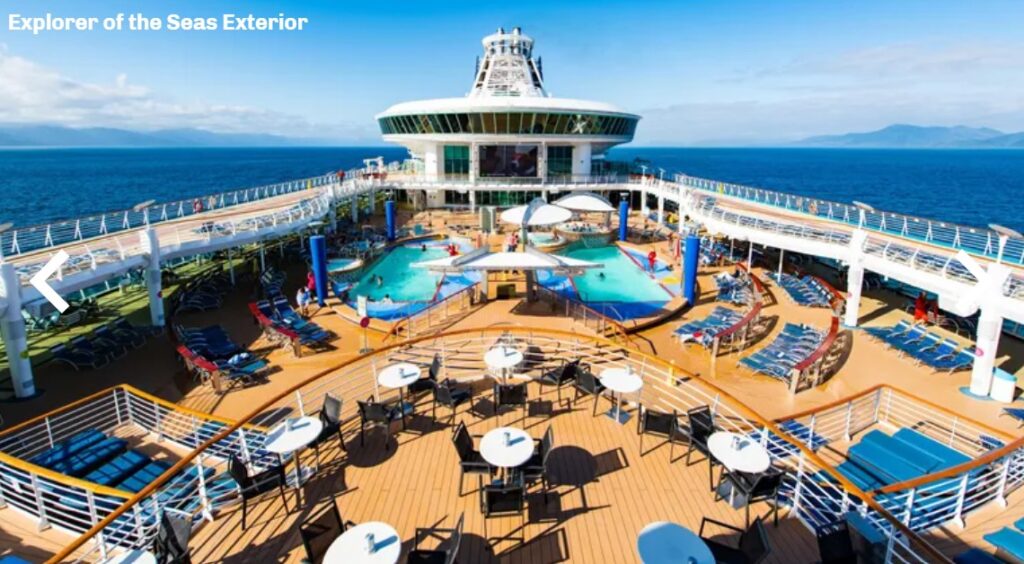Our transatlantic cruise started in Italy at the main cruise ship port, Civitavecchia, which is about 60 km northwest of Rome. For us, it was a short train ride (costing under 5 euros each) in a comfortable air-conditioned train from central Rome. I mention this because we found out that others on the ship organised vehicle transportation and paid hundreds of euros for the pleasure of doing so.
Civitavecchia has two main parts, the local part that is fun, reasonably priced and entirely pleasurable and then there is the tourist part, that is grossly overpriced and designed merely to bilk the tourist dollar. The best example of this was our dinner. We ate at a local taverna and had amazingly good seafood pasta (despite one looking like baked beans), washed down with local beer and ended up with a bill of 38 euros. The next day I had a coffee in the tourist zone and we had some (small) pastries (Jill had a cannoli while I had a Sfogliatella) and the bill for a single coffee and some pastries was 19 euros.



The town of Civitavecchia dates back to the 2nd century and still retains some of its original features (like the Roman dock). The port also includes the 16th-century Michelangelo Fort. The town itself is kinda nice with some odd little quirks. The only real issue of the town is the taxis. They are absolutely obscene in the prices that they charge a bunch of oldies getting on an off the cruise ships.







The town is small and, once on the ship, our conversations with other passengers revealed that they had paid around 30 euros for a 1-2 kilometre ride to the port. Similarly, they caught big bills from the train station to the hotel. Being grotty backpackers, we avoided these as we walked the 1.3 kilometers to our accommodation and the 400 meters to the bus station the next morning.
Having reached and navigated our way through the departure point we boarded our ship and were met with a VIP luncheon (we paid a little extra for the key). The key gives you full internet access while on board as well as some VIP accesses to shows etc for about the same price as the internet access alone.

Our itinerary involved a bunch of sea days as we traversed the Atlantic Ocean so that the ship could operate out of Miami for the next sailing season.
Cartagena, Spain
Our first port of call was in the town of Cartagena in Spain. We liked the idea of this as a bit later on we would be hitting the port of Cartagena in Colombia and the symmetry of going to both amused me. The one in Spain was founded around 200 BC and has been continually inhabited ever since, mostly serving as a major trading port. Today it has about 220,000 people living here.
The port was pretty and was about a 1.5 km leisurely stroll along tree lined and very nicely paved streets to get to the heart of town. Here you are met with the usual tourist hustle and bustle, but on a very relaxed and manageable level. There was a HOHO bus available for those not up to the walk but it was flat and easy and the HOHO line was a bit long, so we chose to walk.





Once in town, cool streets and shops follow, along with the usual eclectic mix of funky restaurants and cafes. Then you can add on the religious bling of the churches with their glittering displays and you have had a pretty nice day out in a typical southern European town.














We followed the main path until the end and looped around the whole town coming back to the main tourist attraction as a last (once the initial surge of humanity had powered through it). And this was of course the Roman Theatre and Archaeological Museum, set right in the heart of town. The main drag came much later and was designed to skirt around it, while never being far away.





In fact, if you just did the main drag it is possible to miss the thing entirely. My favourite part of the the place was when we stopped at a nice, local, out-of-the-way cafe for a coffee and some churros. We got two really good coffees and 7 churros with change from a fiver (the ones in the tourist strip were about triple that price). It was so good that afterwards we got another 7 churros, but this time with the hot chocolate dipping sauce.


The Canary Islands, Spain

The next two stops would be in the Canary Islands. These are a Spanish owned archipelago of 7 main islands off the northwestern coast of Africa.
The seven main islands are (from largest to smallest in the area) Tenerife, Fuerteventura, Gran Canaria, Lanzarote, La Palma, La Gomera, and El Hierro. The area also includes many smaller islands and islets and several major rocks. In ancient times, they were known as “the Fortunate Isles”.
Lanzarote
Our first port of call in the Canaries was Lanzarote (by the way…not a canary in sight…in case you were wondering). Lanzarote is known for its year-round warm weather, beaches and volcanic landscape. The place is pretty stark with black volcanic rock and cactus gardens dominating everything that you see.



Once again we were delivered a bit over a kilometer from the heart of town and did the hike to see what was on offer. As usual, when the crowds went left, we went right. This took us on a lovely seaside walk, past the marina, a lighthouse, some ruins and along until you get to the Castilo de San Jose which is an historic fortress that has since been converted to an art museum.







From here were a bunch of stark landscapes and volcano-looking things, so we turned and headed back towards the tourist throngs. The diversion ramped up our activity and step count, but after a few days on the ship, this was well needed. The town itself was again lovely and well laid out for the cruise ship tourist clientele.













It was flat, well paved, with wide pedestrian streets and limited intersections where the tourist and the local traffic would come to loggerheads. We liked the place but if we were to come again we would be more likely to hire a car and go further afield to explore some of the stark volcanic landscapes, beaches and sights.






Gran Canaria
This was our last stop before what would be another 7 days of nothing but sailing, as we crossed the Atlantic Ocean. Gran Canaria is located about 150 km off the northwest coast of Africa and about 1,350 km from Europe. It has a population of around 850,000 and is predominantly known for its beaches.
The place was conquered by the Spanish in the late 1400’s and has its origins in volcanic activity (mostly made of fissure vents). It is almost round with a diameter of around 50 km and rains so infrequently that it is considered a desert climate.



This was our least favourite of our stops on the boat. The town itself is OK without being amazing with clean neat streets and a few touristy type spots. But for the most part the place is used as one of those all inclusive holiday destinations that Europe seems so keen on. As you wander around to the other side of town you come across the beach of Playa de las Canteras that is filled with poorly attired, visiting European tourists.













The biggest issue that we came across was under employment. There was huge volumes of people (typically of African origin in their early 20’s) just milling about in large (ish) groups with little or nothing to do other than hanging out on street corners in packs. This is the first time since Naples in Italy that we had felt concern for our safety.
I must say that we were not approached or harassed in any way but the groups prompted me to move the wallet from the back pocket to the front pocket, with my hand over the top. Our years of travel have us highly attuned to our surroundings and things that don’t “feel” right and sadly, this is what we got from our time on Gran Canaria.
The ship

Having finished off our ports, all that was left was the seven days of cruising that we had ahead of us. Our ship was the Royal Caribbean Ship, Explorer of the seas.
The Explorer of the Seas was built in 2000 and refurbished in 2014 and can carry 4,200 passengers and almost 1,200 staff across its 15 decks. The ship is one of the smaller to mid-sized in the fleet but includes entertainment like an ice skating rink, rock climbing wall, mini golf course and the Flowrider (a surfing simulator).

Up until now, we had been paying extra for balcony-type rooms or suites that offer better viewing and are closer to the available amenities (and obviously cost more). Our room for this trip was down the bottom of the ship in an outside room on level 3. In fact, our next few cruises will see us in the dodgy cheap rooms, so stay tuned to see if they are any good.



Well if this is the dodgy room down the bottom, I will take it any day of the week. It was lovely. A huge porthole behind the bed meant that you woke up to the ocean every morning. It was so nice that we never even tried to close the curtains.


We wandered the ship, ate and drank at the bars and restaurants, listened to some of the entertainment and generally just had a lovely trans-Atlantic journey. The thing that did throw us was the constant time changes. It seemed like every day or two we had to wind the clock forward as we gained another hour as we progressed towards Miami. The staff loved it, as they got an extra hour of sleep each time (this works backwards when coming the other way). But for those of us with a sleep pattern, I woke up an hour earlier every day.
The cruise itself was great, but it is one of the older cruises that you can do with the average age well into the 70’s and almost half of all those on board at the higher levels of the rewards program.



The ship was probably the biggest letdown. There was lots to see and do but there was no real hidey holes where you could avoid the crowds. This meant that you were hiding in your room or stuck in busy communal areas. Other ships we have been on had little quiet zones dotted around the place where you could sit quietly and read, or do a crossword, but sadly, this was missing on this ship.